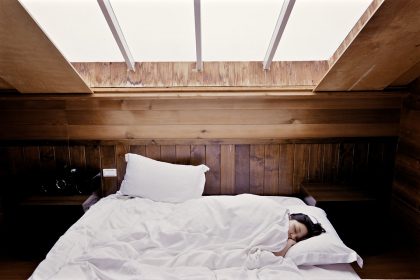Soundproof 101: Managing noise for better sleep for working women
In the quest for a serene night’s sleep, working women often find themselves battling against the cacophony of urban life.
The relentless hum of city living can disrupt the delicate balance of rest and activity. This article explores practical solutions for mitigating noise intrusion, focusing particularly on soundproofing techniques that cater to the unique needs of the working woman.
Understanding noise pollution and its impact on sleep
Noise pollution, a pervasive element of urban environments, significantly impacts the sleep quality of many, particularly working women. The constant barrage of sounds, from traffic to nightly disturbances, disrupts the natural sleep cycle, leading to a range of health issues.
- Physiological Effects: Prolonged exposure to noise pollution during the night can lead to increased levels of stress hormones, such as cortisol. This hormonal imbalance can result in disrupted sleep patterns and, over time, may lead to chronic sleep deprivation.
- Psychological Impacts: Consistent noise interruptions not only affect physical health but also mental well-being. They can lead to heightened anxiety levels, affecting daytime productivity and overall life satisfaction.
- Quality of Life: The quality of sleep directly influences daily functioning. Poor sleep due to noise pollution can decrease cognitive abilities, impacting both professional and personal lives.
Soundproofing basics: Materials and techniques
Soundproofing a living space effectively requires understanding the right materials and techniques. This section explores various methods to mitigate external noise, from simple DIY fixes to more comprehensive solutions.
- Sealing Gaps and Cracks: A primary step is to identify and seal any gaps or cracks around windows and doors where noise can penetrate. Use of weatherstripping or acoustic sealants can be a cost-effective solution.
- Adding Mass to Walls: Increasing the mass of walls can significantly reduce noise transmission. This can be achieved by adding extra layers of drywall or using specialised soundproofing panels.
- Use of Soft Furnishings: Incorporating soft furnishings like heavy curtains, rugs, and upholstered furniture can absorb sound waves, reducing the echo and ambient noise within a room.
The role of windows in noise reduction
Windows are often the weakest acoustic point in a room. Upgrading them can significantly enhance the soundproofing of a space.
- Soundproof Windows: These specialised windows are designed to reduce the transmission of external noise. They often consist of thicker glass and are sealed tightly to prevent sound leaks.
- Cost-Benefit Analysis: While the soundproof windows cost might seem high initially, the long-term benefits are considerable. Not only do they improve sleep quality, but they can also increase the property’s overall value.
- Secondary Glazing: An alternative to replacing existing windows is to add a secondary layer of glazing. This can be a more cost-effective solution while still providing significant noise reduction.
The advantages of acoustic laminated glass
Acoustic laminated glass represents a significant advancement in noise reduction technology. Its unique construction makes it an ideal choice for those seeking to minimize external noise effectively.
- Construction and Functionality: This glass type is made by bonding two sheets of glass with a layer of sound-dampening plastic interlayer. This structure not only reduces noise transmission but also provides additional safety and security benefits.
- Comparative Advantage: When compared to traditional glazing, acoustic laminated glass offers superior noise reduction due to its ability to dampen a broader range of sound frequencies.
- Installation Considerations: Installing acoustic laminated glass may require professional assistance. It’s essential to ensure that the window frames and surrounding structures can support the additional weight of this glass type.
Lifestyle adjustments for better sleep hygiene
In addition to physical modifications to the living environment, adopting certain lifestyle changes can further enhance sleep quality. This section provides practical tips tailored for working women.
- Establish a Relaxing Pre-Sleep Routine: Engage in calming activities like reading or meditation before bed. This helps signal to your body that it’s time to wind down.
- Limit Exposure to Blue Light: Reduce the use of electronic devices like smartphones and laptops before bedtime, as the blue light emitted can interfere with the body’s natural sleep rhythm.
- Optimise Bedroom Environment: Keep the bedroom dark, cool, and quiet. Use eye masks or earplugs if necessary, and invest in comfortable bedding.
- Regular Exercise: Incorporating regular physical activity into your routine can significantly improve sleep quality. However, avoid intense workouts close to bedtime.
- Mindful Eating and Drinking: Avoid heavy meals, caffeine, and alcohol close to bedtime, as they can disrupt sleep patterns.
Embracing tranquillity: Your path to restful nights
As our exploration concludes, it’s clear that managing noise is not just about soundproofing techniques; it’s about cultivating a sanctuary where rest can thrive. For working women juggling myriad responsibilities, investing in soundproofing solutions like soundproof windows and acoustic laminated glass can be a transformative step towards achieving restorative sleep.
While the initial investment may be a consideration, the long-term benefits of improved sleep and well-being are invaluable.
Pankaj Gorsia is the Director of CUIN Glass in London. Under his leadership, Crystal Units has continuously grown thanks to its exclusive high-performance insulating glass with suspended film technology in the residential and commercial sectors.










